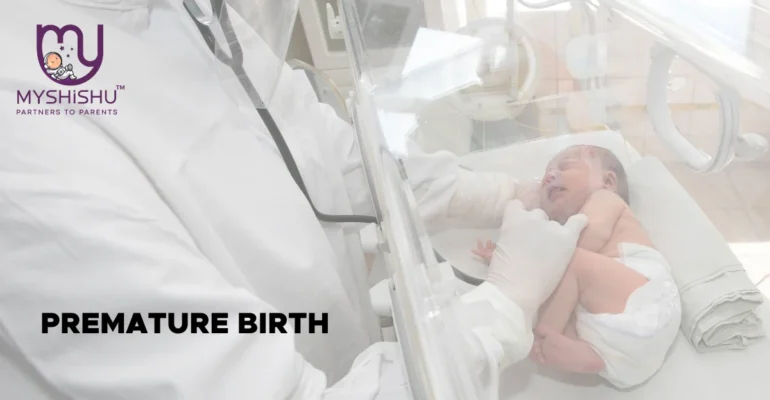Premature Birth – Empowering Resilience and Cultivating Hope
Premature Birth – Empowering Resilience and Cultivating Hope
Introduction
Premature birth, occurring before 37 weeks of pregnancy, is a complex and often unexpected journey that touches the lives of countless families. In the delicate dance between celebration and concern, the arrival of a baby earlier than anticipated brings forth a unique set of challenges. In this exploration, we unravel the intricacies of premature birth, shedding light on its causes, potential complications, and the advances in medical science that offer hope to families navigating this uncharted territory. Join us as we embark on a concise yet informative journey, fostering understanding and empathy for those touched by the realities of premature birth.
What is premature birth?
Premature birth, medically known as preterm birth, occurs when a baby is born before completing 37 weeks of gestation. In the typical 40-week pregnancy timeline, the final weeks are crucial for the full development of the baby’s organs, especially the lungs and brain. A premature birth disrupts this natural progression, presenting unique challenges for both the newborn and the family.
Various factors can contribute to premature birth, ranging from multiple pregnancies (twins or more) and certain maternal health conditions to lifestyle factors such as smoking and drug use. Additionally, medical interventions such as induced labor or cesarean delivery can sometimes lead to preterm birth.
The consequences of premature birth can vary widely, with some preterm babies facing short-term health issues and others experiencing more long-term developmental challenges. Advances in neonatal care have significantly improved the outcomes for preterm infants, but the emotional and financial toll on families remains a critical aspect of the premature birth experience.
Understanding the intricacies of premature birth is essential for fostering empathy and support within communities and healthcare systems. By delving into the causes, potential complications, and advancements in medical care, we can better comprehend the complexities surrounding premature birth and work towards providing comprehensive care and support for families facing this unforeseen journey.
How common is premature birth
Premature birth is more common than one might think, affecting approximately 1 in 10 pregnancies worldwide. Despite advances in medical knowledge and technology, the prevalence of preterm births remains a global health concern. Rates can vary across regions and socioeconomic factors, with certain populations facing a higher risk. The reasons behind premature birth are often multifaceted, involving both medical and lifestyle factors. Understanding the frequency of premature births underscores the need for continued research, public awareness, and support systems to address this significant health issue and enhance the well-being of both preterm infants and their families.
Are there different levels of prematurity?
Prematurity isn’t a one-size-fits-all scenario; rather, it encompasses a spectrum of gestational ages that categorize different levels of prematurity. The classifications include:
- Late Preterm (34 to 36 weeks): Babies born during this period are considered “late preterm.” While they are closer to full-term, they may still face certain health challenges, particularly with lung development and temperature regulation.
- Moderate Preterm (32 to 33 weeks): Infants born between 32 and 33 weeks fall into the moderate preterm category. They often require specialized care to support their immature organ systems.
- Very Preterm (28 to 31 weeks): This category comprises babies born between 28 and 31 weeks. They face more significant health risks due to the incomplete development of vital organs.
- Extremely Preterm (less than 28 weeks): The most critical category, including infants born before 28 weeks, presents the highest risk for complications. These babies often require intensive medical interventions and prolonged hospital stays.
Understanding these distinctions is crucial, as the level of prematurity directly correlates with the potential health challenges a newborn may encounter. Medical professionals tailor their care based on these categories, emphasizing the need for precision and specialized attention in the treatment of preterm infants.
What Health Problems Can a Premature Baby Have?
Premature babies, born before completing a full 37 weeks of gestation, may encounter various health challenges due to their underdeveloped organ systems. Common issues include:
- Respiratory Distress Syndrome (RDS): Premature infants often have underdeveloped lungs, leading to difficulty breathing. RDS is a common respiratory challenge that may require respiratory support.
- Jaundice: The liver of a preterm baby may not process bilirubin efficiently, resulting in jaundice. Phototherapy is commonly used to treat this condition.
- Intraventricular hemorrhage (IVH): Fragile blood vessels in the brain can rupture, causing bleeding. IVH severity varies, with severe cases potentially leading to long-term neurological issues.
- Apnea of Prematurity: Preterm babies may experience pauses in breathing, known as apnea. Monitoring and, if necessary, respiratory support help manage this condition.
- Patent Ductus Arteriosus (PDA): The duct connecting the major blood vessels near the heart may remain open, impacting blood flow. Medications or surgical intervention may be necessary.
- Feeding Challenges: Premature infants may struggle with feeding due to their immature sucking reflexes. Specialized feeding techniques and, in some cases, tube feeding may be required.
- Infections: Weakened immune systems make preterm babies more susceptible to infections. Strict hygiene measures and monitoring are essential.
- Developmental Delays: Preterm birth can lead to developmental challenges such as delayed motor skills, learning difficulties, and behavioral issues later in life.
Understanding these potential health problems equips healthcare providers and families with the knowledge needed to provide targeted care for premature infants. Advances in neonatal medicine have significantly improved outcomes, but ongoing support and monitoring remain crucial for the well-being of preterm babies.

Premature Babies and Developmental Challenges: Potential Health Issues Later in Life
The journey of a premature baby extends beyond the neonatal period, and these infants may face increased risks of developmental challenges that persist into later life. Some potential health issues include:
- Cerebral Palsy: Premature birth, particularly with a low birth weight, is associated with a higher risk of cerebral palsy—a group of disorders affecting movement and muscle coordination.
- Intellectual Disabilities: Preterm infants may be at an increased risk of cognitive and intellectual challenges, potentially impacting academic achievements and overall cognitive function.
- Behavioral and Emotional Issues: Premature babies may exhibit a higher likelihood of behavioral and emotional difficulties, including attention deficit hyperactivity disorder (ADHD) and anxiety disorders.
- Vision and Hearing Impairments: Complications associated with premature birth, such as retinopathy of prematurity (ROP) and hearing loss, can persist and require ongoing management.
- Chronic Health Conditions: Preterm birth may contribute to the development of chronic health conditions, such as asthma, respiratory issues, and cardiovascular problems, later in life.
- Social Challenges: Premature babies may face challenges in social interactions and relationships, potentially influencing their overall quality of life and well-being.
While advances in medical care have significantly improved the outcomes for premature infants, it is essential to recognize the potential long-term consequences and provide comprehensive support. Early intervention programs, regular health check-ups, and specialized care plans can contribute to mitigating these risks and fostering the optimal development of individuals born prematurely. As we continue to advance in neonatal medicine, the commitment to understanding and addressing the unique needs of premature babies remains paramount for their lifelong well-being.
Premature Birth: Health Risks for the Pregnant Person
Premature birth not only impacts the newborn but also poses health risks to the pregnant person. Complications may include:
- High Blood Pressure: Premature birth is associated with an increased risk of high blood pressure (preeclampsia) during pregnancy, affecting both maternal and fetal health.
- Infection Risk: The risk of infection is higher due to the disruption of the protective barrier provided by the amniotic sac.
- Postpartum Depression: Mothers of preterm infants may be more susceptible to postpartum depression, influenced by the stress and challenges associated with premature birth.
- Cesarean Section: Premature birth often necessitates a cesarean section, which carries its own set of risks and complications for the pregnant person.
- Emotional Toll: Coping with the uncertainties and potential health challenges of a premature birth can contribute to heightened stress and emotional strain.
Premature Birth: Unraveling Symptoms and Causes
In the intricate journey of pregnancy, the occurrence of premature birth introduces a set of distinctive symptoms and multifaceted causes, demanding a nuanced understanding to facilitate timely intervention and comprehensive care.
Symptoms:
- Contractions: Regular, painful contractions occurring before the 37th week of gestation may signal the onset of preterm labor. Monitoring the frequency and intensity of contractions is crucial for early detection.
- Vaginal Bleeding: Any episode of vaginal bleeding during pregnancy warrants immediate attention. It can be an indication of various complications, including placental problems or cervical changes that may lead to premature birth.
- Pelvic Pressure: Persistent pressure or pain in the pelvic region, often accompanied by aching sensations, can be indicative of the cervix dilating prematurely. This symptom requires prompt evaluation by healthcare professionals.
- Fluid Leakage: Unexplained leakage of amniotic fluid, often described as a sudden gush or a continuous trickle, suggests a rupture of the amniotic sac. This event demands immediate medical attention to assess the risk of infection and premature labor.
- Backache: Chronic lower back pain, particularly when experienced alongside other symptoms like contractions or pelvic pressure, may be an early sign of preterm labor. Regular assessment is crucial to determining the cause and mitigating risks.
Causes:
- Multiple Pregnancies: Carrying twins, triplets, or more significantly increases the chances of premature birth. The increased strain on the uterus and cervix heightens the risk of early labor.
- Infections and Chronic Conditions: Infections of the amniotic fluid or chronic health conditions such as diabetes, high blood pressure, or certain autoimmune disorders can contribute to the onset of premature birth.
- Cervical Issues: An abnormally short cervix or cervical incompetence may predispose a woman to preterm labor. Regular monitoring and interventions may be necessary to address these structural concerns.
- Uterine and Placental Problems: Conditions affecting the uterus or placenta, such as placenta previa or uterine abnormalities, can disrupt the normal progression of pregnancy and lead to premature birth.
- Lifestyle Factors: Smoking, drug use, and inadequate prenatal care are linked to an elevated risk of premature birth. Addressing these modifiable risk factors is crucial to improving outcomes.
- Previous Preterm Birth: A history of preterm birth increases the likelihood of a recurrence in subsequent pregnancies. Close monitoring and proactive management are essential for individuals with this risk factor.
Being attuned to these symptoms and understanding the diverse array of causes empowers both healthcare providers and expectant parents to navigate the complexities of premature birth with heightened awareness and informed decision-making, ultimately contributing to improved outcomes for both the pregnant person and their baby.
Understanding Premature Birth: Identifying Those at Higher Risk
Premature birth is a complex event influenced by a myriad of factors, and certain individuals are inherently at a higher risk of experiencing this occurrence. Recognizing these risk factors is crucial for proactive medical management and support.
Factors that heighten the risk of premature birth include:
- Previous Preterm Birth: Individuals who have previously experienced premature birth are at an increased risk of its recurrence in subsequent pregnancies. Close monitoring and early intervention are essential.
- Multiple Pregnancies: Carrying twins, triplets, or more substantially raises the risk of premature birth. The added strain on the uterus and cervix can lead to early labor.
- Infections and Chronic Conditions: Women with certain medical conditions, such as diabetes, high blood pressure, or infections affecting the reproductive organs, may face an elevated risk of premature birth.
- Cervical Issues: An abnormally short cervix or cervical incompetence can predispose individuals to preterm labor. Regular monitoring and interventions may be necessary to address these structural concerns.
- Uterine and Placental Problems: Conditions affecting the uterus or placenta, such as placenta previa or uterine abnormalities, can disrupt the normal progression of pregnancy and lead to premature birth.
- Age Factors: Teenagers and women over the age of 35 may face a higher risk of premature birth. Advanced maternal age and certain health considerations associated with different age groups contribute to this increased risk.
- Lifestyle Factors: Smoking, drug use, and inadequate prenatal care are modifiable risk factors that heighten the likelihood of premature birth. Addressing these lifestyle factors is essential to reducing risk.
- Socioeconomic Disparities: Individuals facing socioeconomic challenges, including limited access to healthcare resources and support, may experience an elevated risk of premature birth.
Understanding these risk factors allows healthcare providers to tailor care plans, offer targeted support, and implement preventive measures for individuals at higher risk of premature birth.
Here’s a video you can go through for common pregnancy concerns
Managing and Treating Premature Birth: Navigating the Path to Positive Outcomes
Effectively managing and treating premature birth requires a comprehensive approach that encompasses medical interventions, emotional support, and proactive measures to enhance the well-being of both the newborn and the expectant parent.
1. Medical Interventions:
- Tocolytic medications: These medications may be administered to delay preterm labor temporarily, providing crucial time for other interventions and promoting fetal lung development.
- Corticosteroids: Administering corticosteroids to the pregnant person helps accelerate fetal lung maturation, reducing the risk of respiratory distress syndrome in premature infants.
- Antibiotics: In cases where there is a risk of infection, antibiotics may be prescribed to protect both the pregnant person and the baby.
- Neonatal Intensive Care Unit (NICU) Support: For infants born prematurely, specialized care in the NICU is often necessary to address immediate health concerns and support ongoing development.
2. Emotional Support:
- Counseling and Education: Providing expectant parents with counseling and educational resources helps them understand the complexities of premature birth and prepares them for potential challenges.
- Support Groups: Connecting families who have experienced premature birth can offer invaluable emotional support, fostering a sense of community and shared understanding.
- Mental Health Services: Offering mental health services, including counseling and therapy, is crucial to addressing the emotional toll of premature birth on both the pregnant person and their partner.
3. Proactive Measures:
- Prenatal Care: Comprehensive and regular prenatal care is essential for identifying and managing risk factors early, reducing the likelihood of premature birth.
- Bed Rest: In certain cases, healthcare providers may recommend bed rest to alleviate stress on the cervix and reduce the risk of preterm labor.
- Cervical Cerclage: For individuals with cervical issues, a cervical cerclage may be performed to reinforce and provide additional support to the cervix.
- Monitoring and Surveillance: Continuous monitoring of high-risk pregnancies enables early detection of potential issues, allowing for timely interventions.
By integrating medical expertise, emotional support, and proactive measures, the management and treatment of premature birth aim to optimize outcomes for both the expectant parent and the newborn. This comprehensive approach reflects a commitment to addressing the unique challenges posed by premature birth and fostering a path toward positive and healthy outcomes.
Does preterm labor always cause preterm birth?
Preterm labor doesn’t always result in preterm birth. Timely intervention, medical treatments, and lifestyle adjustments can effectively manage and even halt preterm labor, allowing healthcare professionals to navigate and mitigate the risks associated with premature birth, ultimately contributing to improved outcomes for both the pregnant person and the baby.
Preventing Premature Birth: A Proactive Approach to Maternal and Infant Well-Being
Preventing premature birth involves a multifaceted approach focused on proactive healthcare measures, lifestyle adjustments, and ongoing support. Key strategies include:
- Early and Regular Prenatal Care: Comprehensive prenatal care allows healthcare providers to identify and address potential risk factors early in pregnancy.
- Healthy Lifestyle Choices: Maintaining a well-balanced diet, regular exercise, and avoiding tobacco and illicit substances contribute to a healthier pregnancy.
- Manage Chronic Conditions: Effectively managing pre-existing medical conditions, such as diabetes or high blood pressure, minimizes the risk of complications leading to premature birth.
- Address Infections Promptly: Timely treatment of infections during pregnancy is crucial to reducing the risk of preterm labor.
- Cervical Length Assessment: Monitoring cervical length through ultrasound can identify individuals at risk for preterm birth, allowing for targeted interventions.
- Progesterone Supplementation: In cases of a history of preterm birth, progesterone supplementation may be recommended to reduce the risk of recurrence.
- Avoid Multiple Pregnancies with Assisted Reproductive Technology (ART): Minimizing the number of embryos transferred during fertility treatments can lower the risk of multiple pregnancies and subsequent premature births.
By adopting these preventive measures, expectant parents, along with healthcare professionals, can work collaboratively to create a supportive environment that significantly reduces the likelihood of premature birth, promoting the health and well-being of both the pregnant person and the baby.
When to Contact Your Healthcare Provider About Preterm Labor
Recognizing the signs of preterm labor and taking prompt action is crucial for the well-being of both the pregnant person and the baby. Contact your healthcare provider if you experience:
- Regular Contractions: Contractions occurring every 10 minutes or more frequently.
- Vaginal Bleeding: Any episode of bleeding during pregnancy, even if it’s light.
- Pelvic pressure: persistent pain or pressure in the pelvic area.
- Fluid Leakage: A sudden gush or continuous trickle of fluid may indicate the rupture of the amniotic sac.
- Backache: persistent lower back pain, especially if it accompanies other symptoms.
Prompt communication with your healthcare provider empowers them to assess the situation, provide guidance, and take the necessary actions to address potential preterm labor, ensuring the best possible outcome for both you and your baby.
Conclusion
In the tapestry of pregnancy, premature birth introduces complexities and challenges, yet it is not without hope. Understanding the symptoms, causes, and preventive measures empowers expectant parents and healthcare providers to navigate this intricate landscape. Early intervention, emotional support, and advances in medical care contribute to positive outcomes. While premature birth may pose risks, it also underscores the resilience of the human spirit. By fostering awareness, embracing preventive strategies, and offering unwavering support, we pave the way for a future where the journey through pregnancy, even in the face of prematurity, can be one of hope, resilience, and ultimate triumph.










